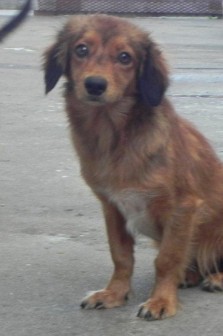Continued from last week
More general information
Last week, we commenced sharing some general information pertaining to the bones, muscles, ligaments and joints of the animal’s body. Actually, the skeletal anatomy of man and dog has much in common, including similar terminology. Due to the fact that man evolved into a two-legged creature, there are some significant differences in terms of angles, lengths and positioning of the bones.
The hock, for example, so prominent on the dog, is actually the heel-bone in a man. Whereas man walks on the sole of his foot, the dog walks on the toes. Man carries all his weight on his hips; the dog carries 75 per cent of his weight on his shoulder joints and front legs. This helps to explain why front leg disorders are relatively common in dogs.
Breeders and veterinarians use certain terms to describe a dog’s overall structure and composition.
 His conformation is the degree with which the various angles and parts of his body agree or harmonise with one another. Standards for purebred dogs describe the ideal conformation for each particular breed. These standards are based, to a certain extent, upon aesthetic considerations, but they take into account the breed’s working purposes, too.
His conformation is the degree with which the various angles and parts of his body agree or harmonise with one another. Standards for purebred dogs describe the ideal conformation for each particular breed. These standards are based, to a certain extent, upon aesthetic considerations, but they take into account the breed’s working purposes, too.

Most breed standards provide some information as to the desired angulation, or slope to the bones of the shoulder, pelvis and limbs. These angles are determined by comparison with imaginary lines drawn horizontally and vertically through the plane of the standing dog.
Another term used to judge the physical attributes of a dog is soundness. When applied to the composition of his musculosketal system, it means that a sound dog is one in whom all the bones and joints are in correct alignment and functioning properly.
Lameness
In the true sense of the word, lameness is really a symptom of a more fundamental disorder, just as a “headache” is only a sign of a greater problem, and not an ailment in itself.
Lameness or a limp is really a reflection of a problem associated with the bones/joints/muscles/tendons/nerves of the extremities (limbs). In dogs, lameness tends to stem mostly from a bone or joint problem, even though there are enough cases of lameness, the origin of which is to be found in maladies of the muscles and/or nerves of the hip/legs/feet. Irrespective of the origin of the problem, expressions of pain and/or weakness in the involved limb follow.
How does one pinpoint where the centre of the problem lies? Well, accurate diagnosis should not be too difficult. One can, for starters, review the history and the physical status of the animal. Did the animal sustain a hit or some other type of mechanical trauma? Was the lameness slow in emerging or did it suddenly show itself?
Is any bruise visible? And so on. Usually, one can immediately see which leg is exhibiting the limp, because the animal would favour the injured leg when walking or standing.
During motion, the dog will make shorter steps with injured legs, one could see how the head bobs up and down as the weight of the dog comes down on and is lifted from the affected leg. If it is a hind leg that has the problem, then one can see the hip of the healthy leg dipping as the dog tries to make a larger step with the good leg, while only tipping on the injured leg.
Of course, supportive tests can be carried out to ascertain which leg is injured and the extent of the damage. I am referring to accessories such as X-rays (radiography), arthrocentesis, even tissue biopsy and histopathology.
These interventions cost money and usually your vet would not go in this direction – except perhaps for the X-ray. Palpitation and flexing and stretching of the legs can yield definitive information on which an accurate diagnosis can be made.
More of this next week.
Please implement disease preventative measures (vaccinations, routine dewormings, monthly anti-heartworm medication, etc) and adopt-a-pet from the GSPCA’s Animal Clinic and Shelter at Robb Street and Orange Walk, if you have the wherewithal to care well for the animals. Do not stray your unwanted pets, take them to the GSPCA’s Clinic and Shelter instead. If you do not wish your pet to have puppies or kittens, you may exploit the GSPCA’s free spay and neutering programme. If you see anyone being cruel to an animal, or if you need any technical information, please get in touch with the Clinic and Shelter by calling 226-4237.









